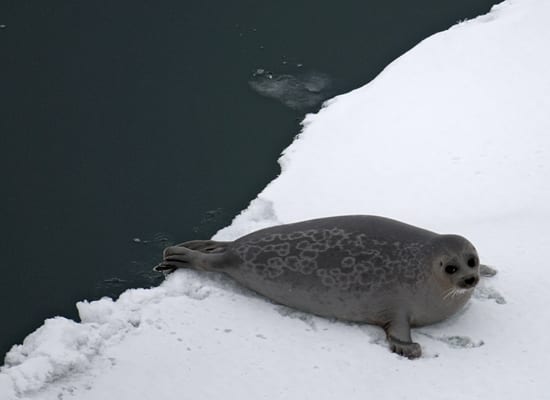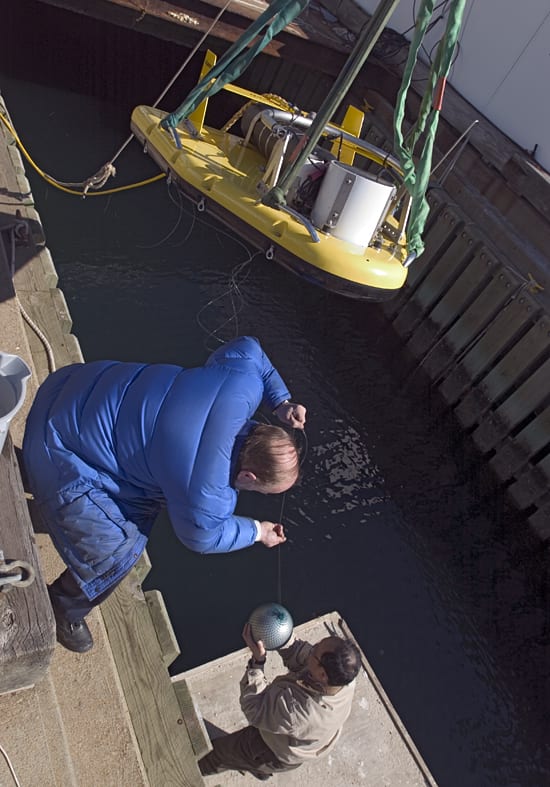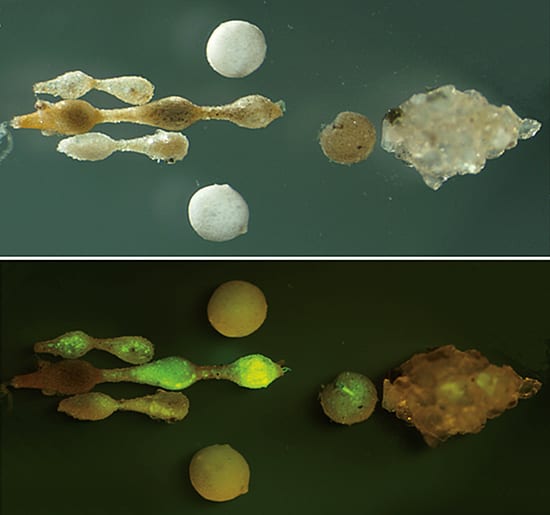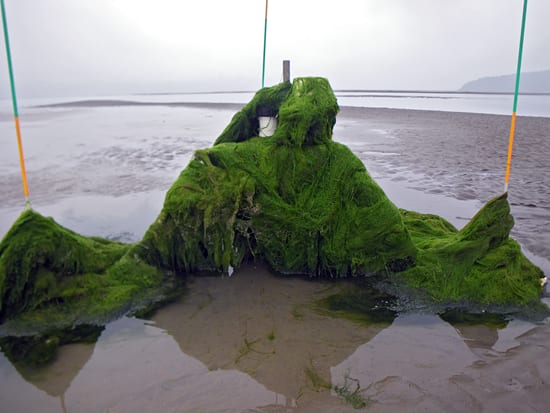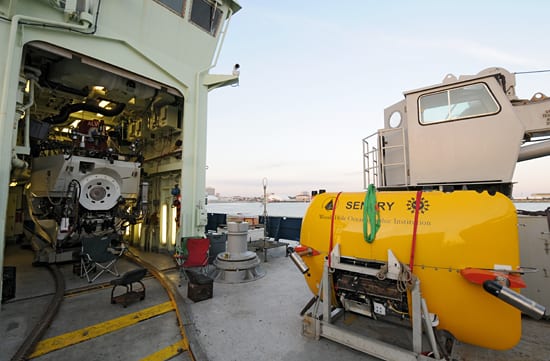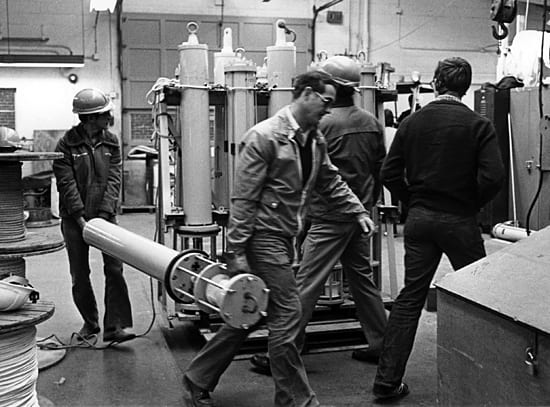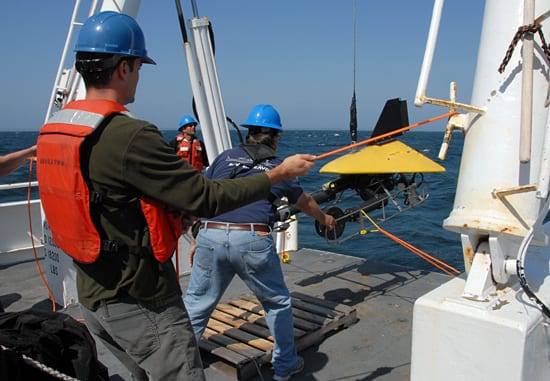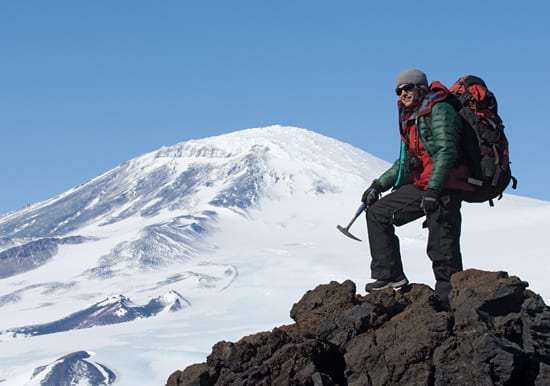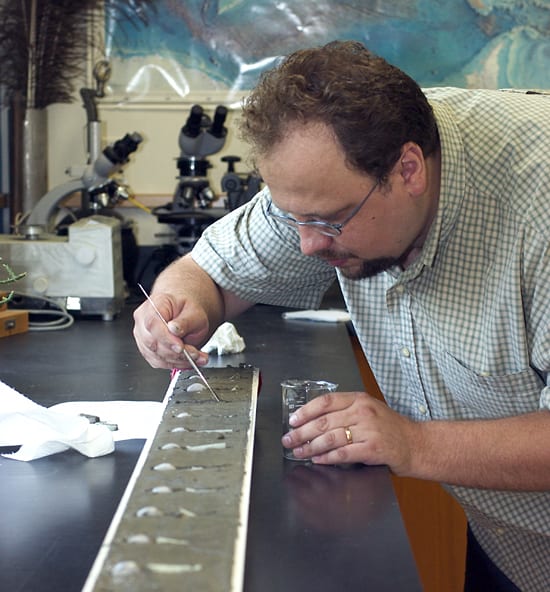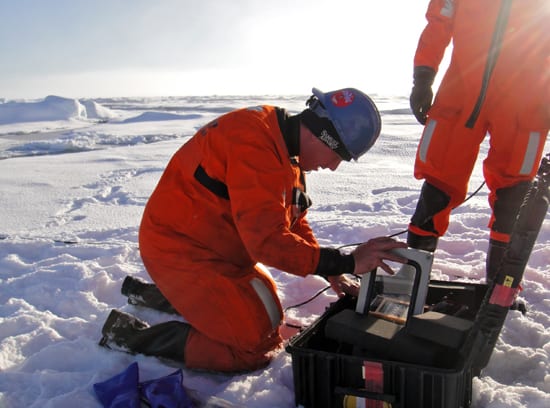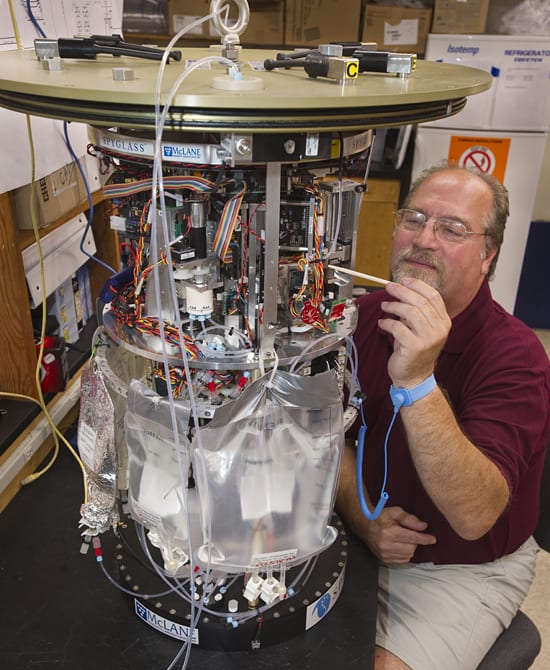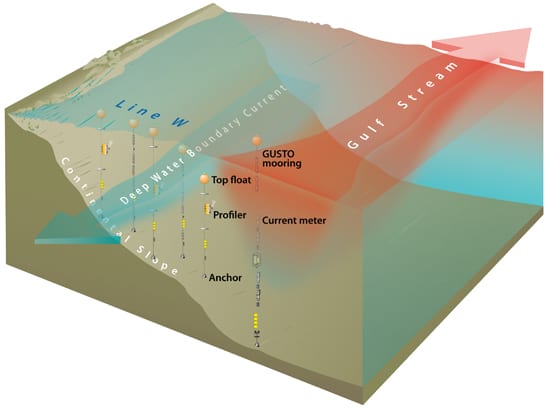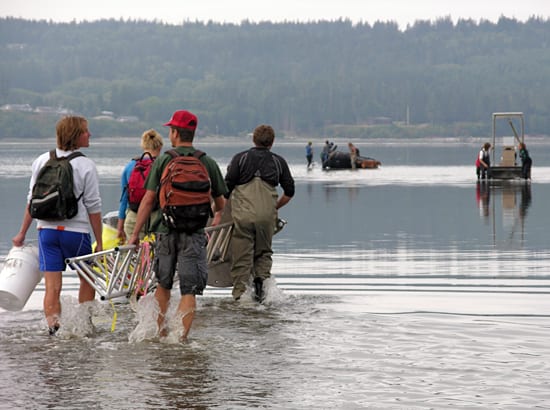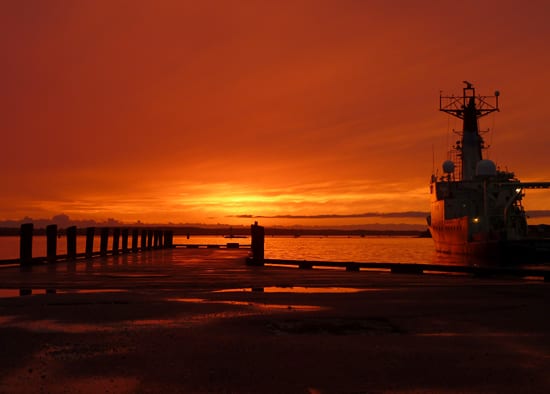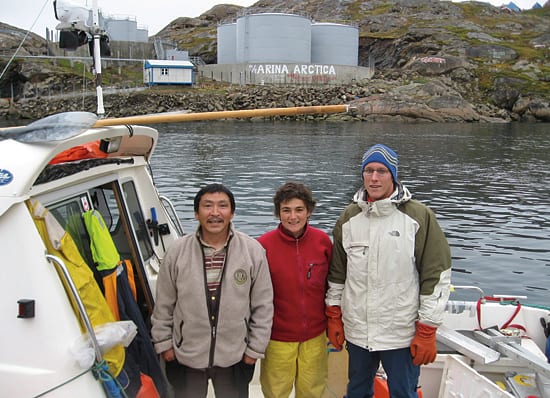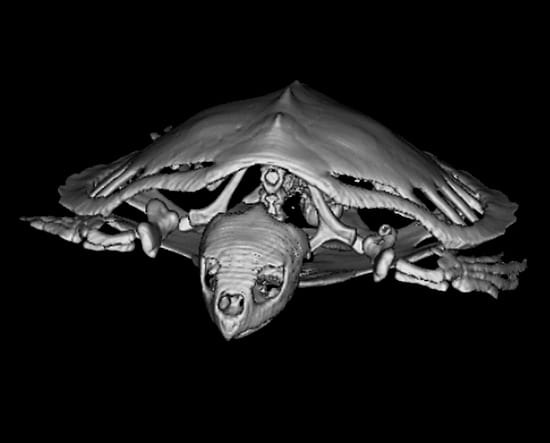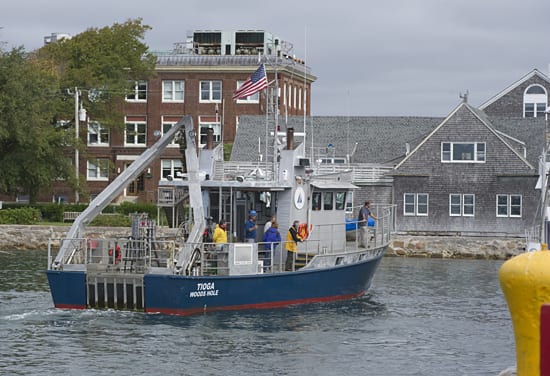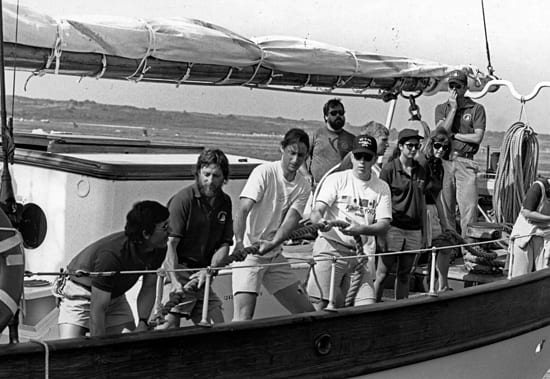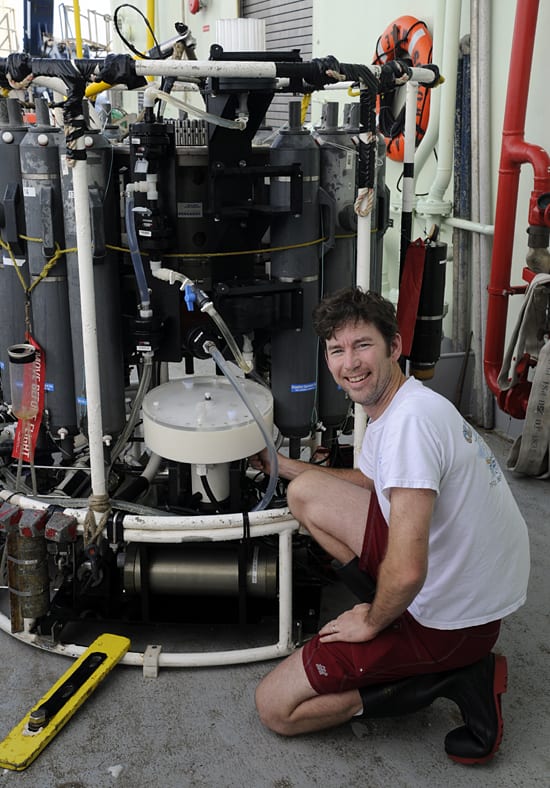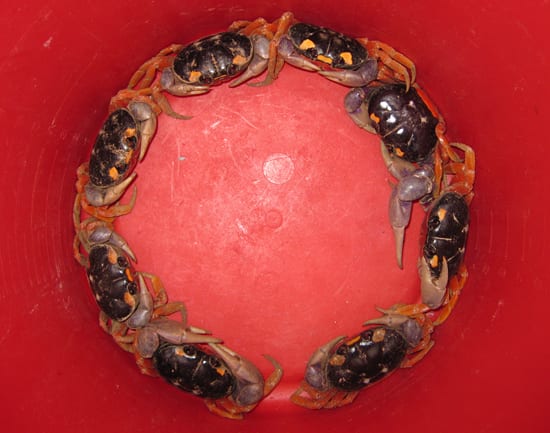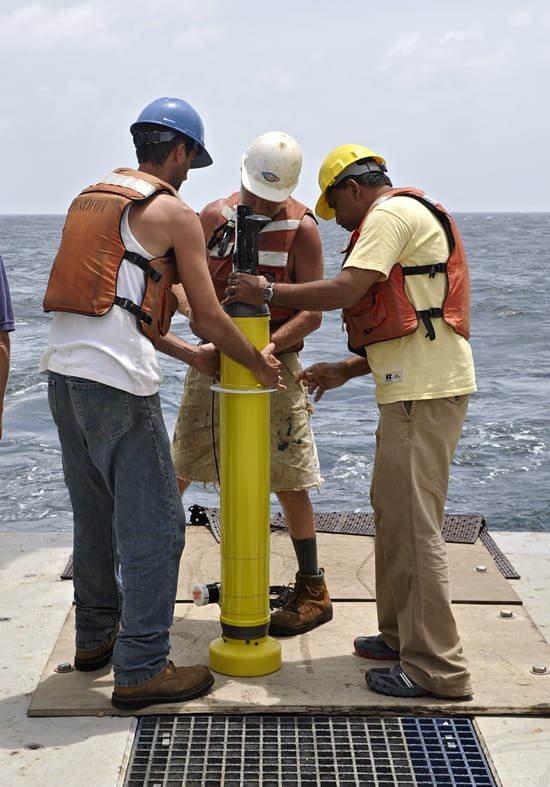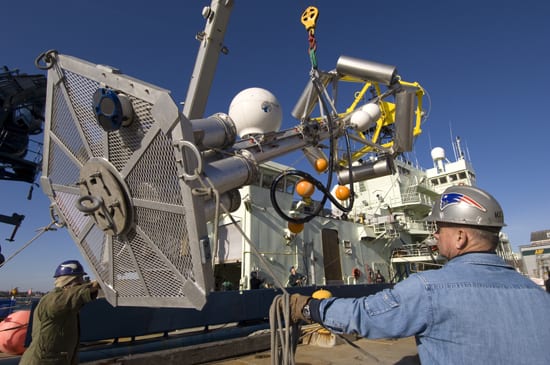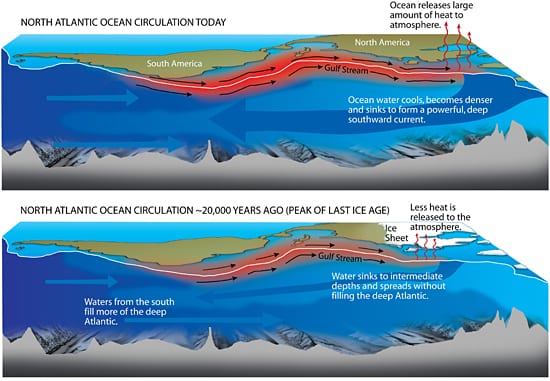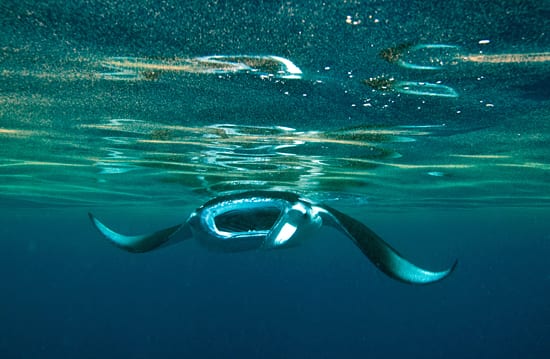Multimedia Items
A Delicate Balance
Ringed seals, like the one pictured here, are the smallest and most common seals found in the Arctic. Their diets consist mainly of shrimp, krill and other small crustaceans and…
Read MoreGone Fishing
With his colleagues Jim Irish (in blue jacket) and Dezhang Chu (at right), WHOI scientist Tim Stanton adapted a low-frequency commercial sonar system, originally designed to survey seafloor geology, to identify fish…
Read MoreGreen Glow of Life
One suggested way to reduce carbon dioxide emissions is to pump it into the deep ocean, where proponents believe it would remain as a slurry-like hydrate. WHOI geobiologist Joan Bernhard…
Read MoreUnwanted Harvest
Low tide reveals gobs of the alga Ulva hanging from a sampling station on the Skagit tidal flats north of Seattle. In 2009 a team of researchers led by WHOI…
Read MoreThe Dynamic Duo
The manned submersible Alvin (left) made headlines during its recent Dive and Discover mission in the Gulf of Mexico, but the autonomous underwater vehicle Sentry (right) is what had the scientific…
Read MoreReady for a Rest
Jerry Dean (foreground) and colleague carry a Vector Averaging Current Meter that had just been recovered from the Sargasso Sea, where it was attached to a mooring line as part…
Read MoreProfiling Plankton
WHOI biologist Gareth Lawson (foreground) and colleagues from the University of Rhode Island prepare to deploy the Video Plankton Recorder (VPR) during a September 2010 expedition to the Gulf of…
Read MoreGo South, Young Woman
Research at WHOI isn’t focused exclusively on the ocean. In 2007, MIT/WHOI Joint Program student Andrea Burke got the chance to travel to Antarctica. She joined an expedition led by…
Read MoreDanube Delta Cores
Did a flood of biblical proportions drown the shores of the Black Sea 9,500 years ago, wiping out nearby Neolithic settlements? “We don’t see evidence for a catastrophic flood as…
Read MoreIcy Communications
WHOI engineer Peter Koski from the Applied Ocean Physics and Engineering Department sets up a remote recording station on a small ice floe in the Fram Strait, between Greenland and…
Read MoreFinding HABs with ESP
Research associate Bruce Keafer inspects a new instrument known as the environmental sample processor (ESP) in the lab run by WHOI senior scientist Don Anderson. The robotic instrument will be…
Read MoreA Line in the Ocean
Line W is an array of five moorings that has been monitoring changes in two currents that play important roles in regulating Earth’s climate: the Gulf Stream (orange area) and…
Read MoreWhile the Tide is Out
Researchers take advantage of low tide to carry an instrument tower across the Skagit tidal flats north of Seattle in the summer of 2009. The team, which was led by…
Read MoreLooking Ahead to 2011
Happy New Year from everyone at the Woods Hole Oceanographic Institution.(Photo by Rick Galat, Woods Hole Oceanographic Institution)
Read MoreTracking Warm Water Up North
Greenlander Arqaluk Jørgensen and WHOI researchers Fiamma Straneo (middle) and Dave Sutherland (right) prepare for a day trip into Sermilik Fjord in East Greenland in 2008. They found subtropical water…
Read MoreAn Inside Job
Woods Hole Oceanographic Institution possesses the only imaging facility in the world entirely dedicated to marine research: the Computerized Scanning and Imaging Facility (CSI), led by biologist Darlene Ketten. Using the…
Read MoreHome After a Long Day?s Work
The research vessel Tioga returns home to Woods Hole in September 2010 after a day of research in Buzzards Bay. Scientists on the vessel spent the day collecting shallow coastal…
Read MoreHeave Ho!
Kurt Polzin (center, in white shirt and no cap) pulls his weight on the Sea Education Association’s SSV Westward in 1990, during one of the first MIT-WHOI Joint Program “new…
Read MoreIn Search of Underwater Clouds
WHOI scientist John “Chip” Breier prepares the SUPR (Suspended Particulate Rosette) sampler and other instruments for deployment in the North Atlantic in October 2010. He designed the SUPR sampler, the…
Read MoreA Christmas Wreath of Crabs
Square land crabs (Gecarcinus quadratus) form a defensive ring in a collection bucket at the Liquid Jungle Lab in Panama. Research by Joanna Gyory, a graduate student in the MIT/WHOI…
Read MoreThree Men and a Float
In May 2010 R/V Knorr sailed off the coast of Brazil near the mouth of the Amazon River, so that scientists could study how the river’s plume of nutrient-laden fresh…
Read MoreA Tall Buoy
Members of the WHOI Buoy Group load a spar buoy onto the research vessel Atlantis for use in the CLIMODE experiment to investigate the formation and evolution of a mass…
Read MoreSearching for a Switch
To reconstruct climate changes over millennia, scientists like WHOI’s Delia Oppo and former colleague Jerry McManus use conceptual models, like the one depicted here, that simulate the workings of the ocean…
Read MoreOpen Wide
A manta ray, Manta birostris, opens its mouth wide to engulf zooplankton and other tidbits in the water. The dark marks visible inside the mouth are its gill slits. Manta…
Read More
